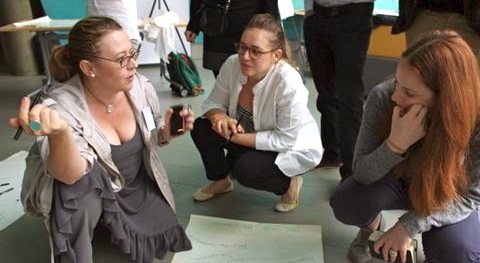I have the honor to have been invited as a panelist to the third European Outreach Meeting of the Open Government Partnership, in Rome. The chair – my friend Guido Romeo at Wired Italia – had given me a fierce briefing: give the room a how-to list for involving citizens in collaboration with government institutions. In less than five minutes, in English and without using slides. So I complied as best as I could – it took three minutes, and a lot of simplification.
After the panel, a few kind souls came up to me, congratulated and asked if I had any writeup. As a matter of fact, I did: I had saved my notes in a draft email – as close as it gets to the digital version of a paper napkin. So, here it is. Enjoy.
- Make sure you have the right issue. Participation is not particularly useful when it comes to mutually exclusive, divisive choices (“Windows vs. Linux”). In the hacker community, which is very likely the hotbed of the most advanced participation techniques around, these discussions are known as “religion wars” and recognized as counterproductive, because they don’t converge, no matter how much you talk about it.
- Design the right process. This is very tricky, as it is a choice to make in a highly multidimensional space, so I won’t even attempt to go into that. Let me just say one thing: the critical thing about designing a collaboration process is that technical choices are not implementation issues to be left to your ICT people. They cast a shadow on the future, because technology is not good, nor bad, nor neutral. Example: “tell us your idea” type tools are very popular – even Open Government Partnership uses them. These were designed for corporate customer relationship management (“hey, this car should also come in dark green” kind of idea). They are good at harvesting the creativity of their users, but bad at keeping track of the consequences of alternative courses of action. Think of budgeting decisions: someone says “let’s invest in education!” and that idea gets many votes – surely better education must be a good thing. But this has nothing to say about what you forego in order to invest on education. When designing a process, at a very minimum you need to deploy social and technical plumbing in a way that controls for psychological biases (which are huge and well documented) and mathematical fairness of the proposal evaluation and decision making phase, and tries to get the citizen to be at her best. In that ancient technology for collaboration we call Parliament, people call each other “my honorable colleague”. That’s an exhortation; a reminder that what unites users of that technology is more fundamental that what divides them; it is embedded in the rules, and nudges interaction towards a more collaborative stance.
- Pay attention to the citizen’s security. Some citizens are not happy with being profiled, datamined, packaged in huge databases and sold to marketeers – and that includes some of the most committed, skilled, creative layers of society. Some distrust Google. Many distrust Facebook. My advice is: talk to the hacker community. Talk to the privacy movement. They are willing to help. And if they feel safe, this will send a good signal to everyone else.
- Enforce a fair and explicit social contract. Citizens are now asked to spend time and brainpower in a large and growing number of participation and collaboration exercises. Inevitably, we are looking at an inflation phenomena, with about 200 people showing up in all of them and being stretched very thin. Citizens are not on the government’s payroll, and their time should be used sparingly and with respect, trying to give something back. This something is likely be influence and knowledge. Influence: in return for my effort, I get to have some influence in this particular government decision. Knowledge: in return for my effort, I get to understand better this problem I feel I should know about. Whatever the precise contour of the social contract, I would argue any participation exercise needs to have one; and that part of it has to be a follow-up, where citizens are thanked and told what the government did with their input and why.
